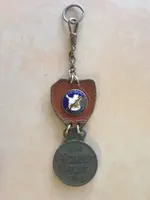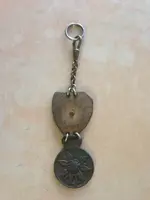You are using an out of date browser. It may not display this or other websites correctly.
You should upgrade or use an alternative browser.
You should upgrade or use an alternative browser.
✅ SOLVED What is this? Is it worth anything? Found in 93 year old uncles belongings
- Thread starter Thesmolar
- Start date
I'm standing up for the American Warfighters that fought or died in that war. I was raised up watching Combat with Rick Jason and Vic Marrow, I only have dislike for anything the nazi's stood for, sorry I was raised that way.
My father was tail gunner on B17s over Germany, had uncles landed on D-Day and one survived Bataan Death March and prison camp..
History is history, it deserves to be preserved not destroyed...
Upvote
0
NOLA_Ken
Gold Member
- Joined
- Jan 4, 2011
- Messages
- 5,214
- Reaction score
- 4,179
- Golden Thread
- 0
- Location
- Formerly New Orleans.. Now Pueblo Co
- Detector(s) used
- several, mostly Garrett
- Primary Interest:
- All Treasure Hunting
Collectors do more to preserve these things, and to understand the history behind them than any museum, we know what we know about the history of these items, (fine details like who made them, where they were made, how to spot fakes, etc....) because of the research done by collectors. I know people who have found named items, and tracked down the entire story of the man behind them, I've personally researched a WW1 victory medal from the South African Field Artillery, learned the mans life story, and returned the medal to his family. Museums do not do that. The market for these items reflects different interests between different collectors, and an opportunity for those who are not nterested in the items to put them in the hands of someone who does, while making a few bucks in the process. It's better to have historic items like these being sold to collectors than it is to have them destroyed or thrown in the garbage and lost forever. And items like this one, are not going to be displayed in a museum, they will end up in a box or a drawer somewhere never to be seen again.
I've actually had the WW2 Museum tell me they weren't interested in some items simply because I had no background information on them, they said I was welcome to donate them, but they would just end up in storage and never be seen by the public. I think selling those items to someone who will care about them and display them makes more sense
I've actually had the WW2 Museum tell me they weren't interested in some items simply because I had no background information on them, they said I was welcome to donate them, but they would just end up in storage and never be seen by the public. I think selling those items to someone who will care about them and display them makes more sense
Last edited:
Upvote
0
NOLA_Ken
Gold Member
- Joined
- Jan 4, 2011
- Messages
- 5,214
- Reaction score
- 4,179
- Golden Thread
- 0
- Location
- Formerly New Orleans.. Now Pueblo Co
- Detector(s) used
- several, mostly Garrett
- Primary Interest:
- All Treasure Hunting
All I can say is things like that belong in a museum where we can see and remember. But when people barter, sell, trade them it should be in private. When some of us see people putting worth to them in public we call it how we see it, it is not all about money. I think war trophies should come with a story, that's what the Warfighter took it for, he didn't take it for him or his family to sell away. It is something to be proud of. But that's just my opinion.
My grandfather and his buddies shipped home anything they could after the war, didn't matter if it was nailed down or not. And yeah, they grabbed some of it knowing they could sell it later.
Upvote
0
- Joined
- Sep 15, 2006
- Messages
- 2,346
- Reaction score
- 1,153
- Golden Thread
- 0
- Location
- Fremont, Ohio
- Detector(s) used
- Equinox 800, Fisher F-75 LTD2, CZ-70, CZ-21, 1280x, Vibraprobe 560, Minelab Pro-Find 35
- Primary Interest:
- All Treasure Hunting
Thank you for sharing this piece with the forum, I find it very interesting. It must have held some meaning for your uncle, sadly the story behind exactly how it was acquired by your uncle went with him.
Steve
Steve
Upvote
0
Similar threads
- Replies
- 14
- Views
- 800
- Replies
- 2
- Views
- 391
- Question
- Replies
- 26
- Views
- 2K
Users who are viewing this thread
Total: 1 (members: 0, guests: 1)
Latest Discussions
-
-
-
-
Confederate Gold from the Civil War was Found in a Shocking Place
- Latest: releventchair
-



